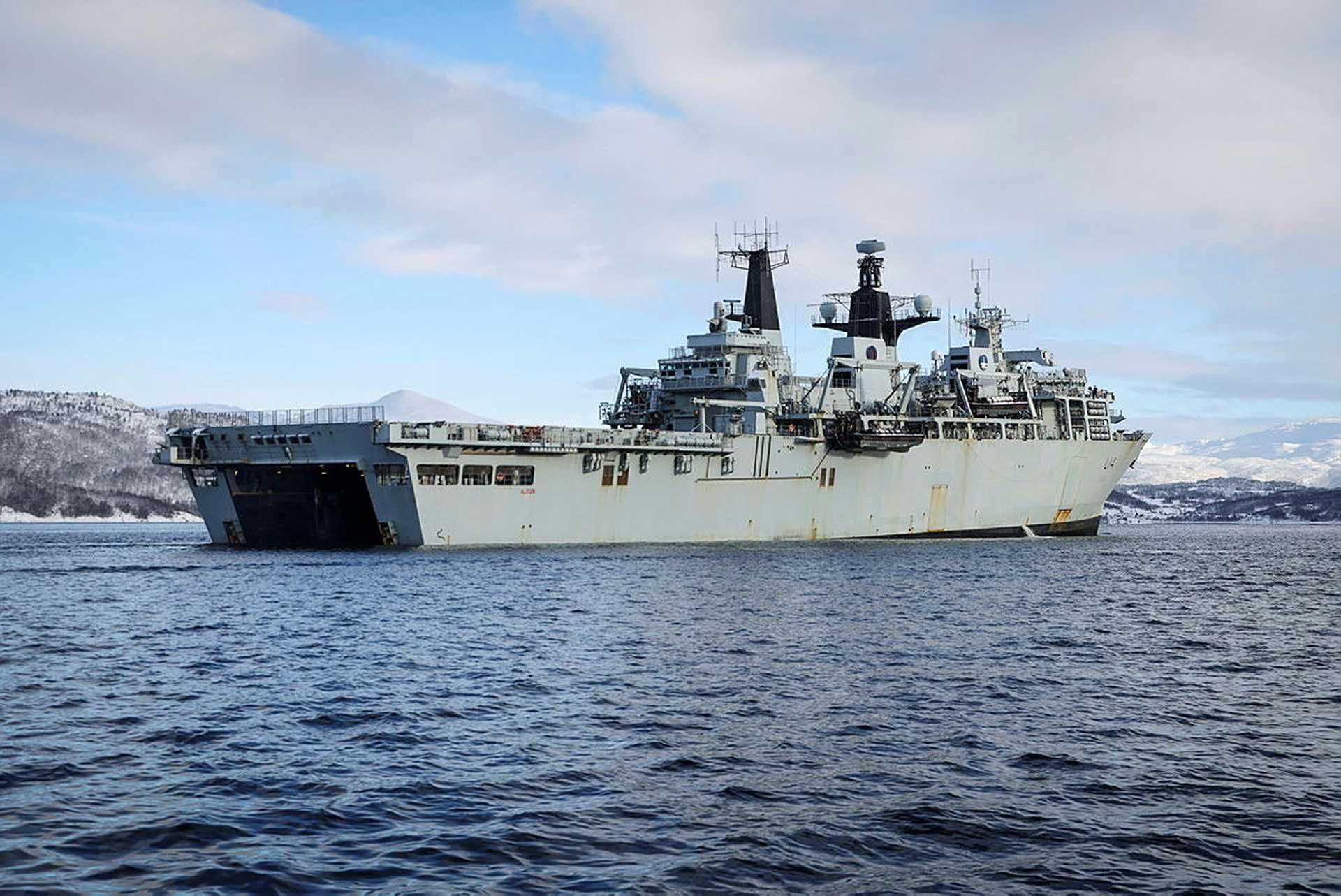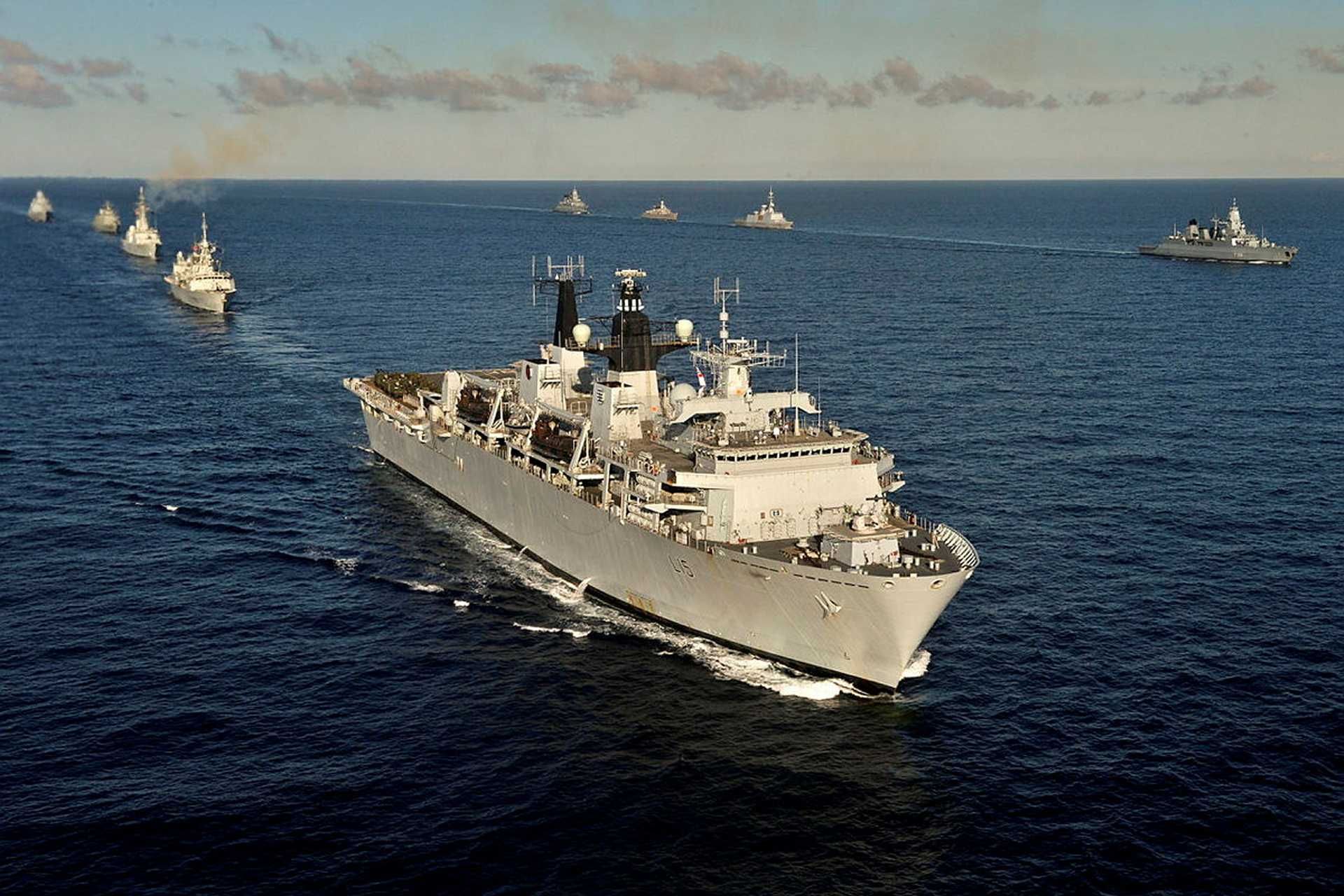Breaking News
UK sign agreement for transfer of all Albion-class landing platform dock vessels to Brazil.
On April 2, 2025, during the LAAD Defence & Security 2025 exhibition held at Riocentro in Rio de Janeiro, the Brazilian Navy and the British Royal Navy signed a letter of intent for the future transfer of the HMS Albion and HMS Bulwark, meaning that all ships of the Albion-class landing platform dock fleet are now subject to negotiations for acquisition by the Brazilian Navy. The document outlines the basis for formal negotiations, including technical assessments and financial and logistical discussions, with the objective of incorporating both ships into Brazil’s naval fleet.
Follow Army Recognition on Google News at this link

The Albion-class ships served as afloat command platforms for the British Navy's amphibious task force and to transport, deploy, and recover troops, vehicles, and equipment in support of amphibious operations. (Picture source: Twitter/Garuda Rajawali)
Admiral Edgar Luiz Siqueira Barbosa, Director-General of Materiel for the Brazilian Navy, stated that Brazil has experienced multiple recent situations where naval support has been required in response to natural disasters. He cited the floods in São Sebastião (São Paulo) in 2023 and in the state of Rio Grande do Sul in 2024 as examples. According to Admiral Siqueira Barbosa, the acquisition of the two ships would enhance the Navy's capacity to support the civilian population in emergency situations. He also emphasized that Brazil has a history of acquiring British-built naval platforms and that the country has gained operational experience with them over time. No official financial figure was disclosed at the signing, but on January 26, 2025, British newspapers reported that the sale of the two vessels was under discussion for a total of £20 million (approximately R$145 million). On February 4, 2025, the Brazilian Navy confirmed the ongoing negotiations to the newspaper O Globo.
The Albion-class was developed to replace the Fearless-class, which had been commissioned in the 1960s and was considered outdated by the 1990s. On July 18, 1996, the UK Ministry of Defence awarded a £450 million contract to Vickers Shipbuilding and Engineering Ltd in Barrow-in-Furness for the construction of two new landing platform docks. The ships were intended to serve as afloat command platforms for the Royal Navy's amphibious task force and to transport, deploy, and recover troops, vehicles, and equipment in support of amphibious operations. The vessels were constructed by BAE Systems Marine at the former Vickers yard. HMS Albion was commissioned in 2003, followed by HMS Bulwark in 2005. The class formed part of the modernization of the UK’s amphibious fleet, which also included the helicopter carrier HMS Ocean, Bay-class landing ships, and Point-class sealift ships.
HMS Albion was laid down on May 23, 1998, launched on March 9, 2001, and commissioned into the Royal Navy on June 19, 2003. Her homeport is HMNB Devonport in Plymouth. HMS Bulwark was laid down on January 27, 2000, launched on November 15, 2001, and commissioned on April 28, 2005. She also operates from Devonport. Albion served as the Royal Navy flagship from December 2010 to October 2011 and again from March 2018 to January 2021. Bulwark held the role of flagship from October 2011 to June 2015. Both ships have alternated between periods of extended readiness and high readiness in accordance with UK defense policy established by the 2010 Strategic Defence and Security Review. As of 2024, both vessels are currently in extended readiness and were scheduled to be withdrawn from service by the Royal Navy in March 2025, following a decision announced in November 2024 by the newly elected Labour government in the United Kingdom.
In terms of operational history, HMS Albion participated in Exercise Joint Winter 04 off Norway in early 2004 and later deployed to the Gulf of Sidra and the Indian Ocean in 2011 as part of the NATO-led operation in Libya and anti-piracy missions off the Horn of Africa. In 2010, she transported stranded military personnel and civilians from Spain during the air travel disruption caused by the Eyjafjallajökull eruption. From 2020, she participated in the Littoral Response Group eXperimental (LRG[X]) deployment, testing unmanned systems in operational environments. HMS Bulwark conducted her maiden deployment in 2006, serving as flagship for Task Force 158 in the Persian Gulf. She evacuated 1,300 UK nationals from Lebanon during Operation Highbrow in July 2006 and later participated in exercises such as Joint Warrior, Griffin Strike, and Cold Response. In 2015, she operated in the Mediterranean during Operation Weald, recovering over 2,900 migrants. Despite undergoing a refit from 2020 to 2024 costing £72.1 million, she is not expected to return to active duty and remains in reserve.

The HMS Albion participated in Exercise Joint Winter 04 off Norway in early 2004 and later deployed to the Gulf of Sidra and the Indian Ocean in 2011 as part of the NATO-led operation in Libya and anti-piracy missions off the Horn of Africa. (Picture source: UK MoD)
HMS Albion underwent a major refit between 2014 and 2017. Modifications included the removal of Goalkeeper CIWS mounts and the installation of two 20mm Phalanx CIWS systems, a Type 997 Artisan 3D radar, and a new command system. After the refit, she re-entered active service in 2017. HMS Bulwark received a £30 million refit between 2010 and 2011 and an additional extensive refit starting in 2020. Improvements included conversion for full night-vision operations, simultaneous operation of two Chinook helicopters, and enhanced landing craft control capabilities. Despite the investment, in March 2024 the UK Ministry of Defence confirmed that Bulwark would remain in reserve unless operationally required.
The Albion-class ships are 176 meters long with a beam of 28.9 meters and a draught of 7.1 meters. They have a full load displacement of 19,560 tonnes. Each ship accommodates a crew of 325 and can carry up to 405 troops, or up to 710 in overload conditions. The vehicle deck holds 67 vehicles, including up to six Challenger 2 main battle tanks and 30 armored personnel carriers. The well dock can accommodate four LCU MK10 landing craft, each capable of carrying a main battle tank. Four smaller LCVP MK5 craft, capable of transporting 35 troops or two light vehicles, are carried on davits on the ship's superstructure. The flight deck has two landing spots designed to support operations of helicopters up to the size of the CH-47 Chinook. The ships do not include hangar space but are equipped to support rotary-wing operations.
Both vessels use a General Electric electric propulsion system powered by two Wärtsilä Vasa 16V 32E and two 4R 32E diesel generators. The system supplies propulsion and electrical power across the ship and reduces the engineering crew requirements compared to previous generations. Maximum speed is 18 knots with an operational range of 8,000 miles (13,000 kilometers). The ships include a bow thruster for improved maneuverability. Additional onboard equipment includes a 52-ton tracked beach recovery vehicle and two tractors — one for laying trackways and another equipped with excavation tools.
Defensive systems consist of two 20mm Phalanx CIWS installations, two 20mm GAM-BO1 cannons, and general-purpose machine guns. Additional measures include the Outfit DLJ radar/infrared decoy launchers, Seagnat decoy systems, and the DLH off-board decoy system. The radar suite includes two Type 1007/8 I-band radars for navigation and aircraft control, and a Type 997 Artisan 3D radar for air and surface search. Earlier models used the Type 996 radar, gradually replaced during upgrades. The electronic warfare suite includes the ADAWS 2000 combat data system and a UAT/1-4 electronic support measures (ESM) system.

The HMS Bulwark was laid down on January 27, 2000, launched on November 15, 2001, and commissioned on April 28, 2005. (Picture source: UK MoD)


























